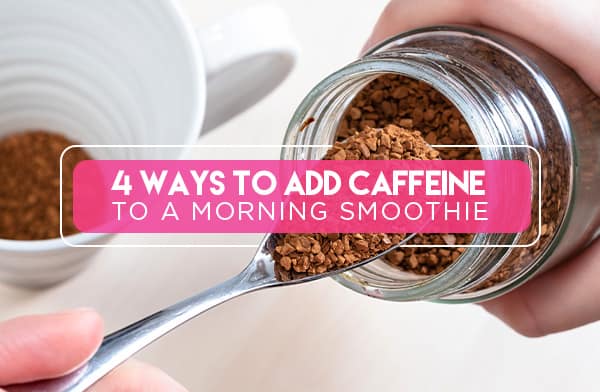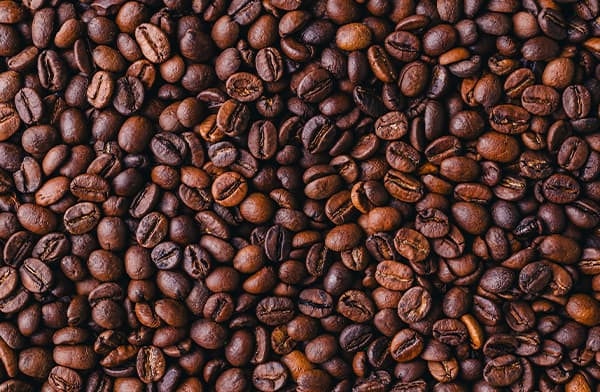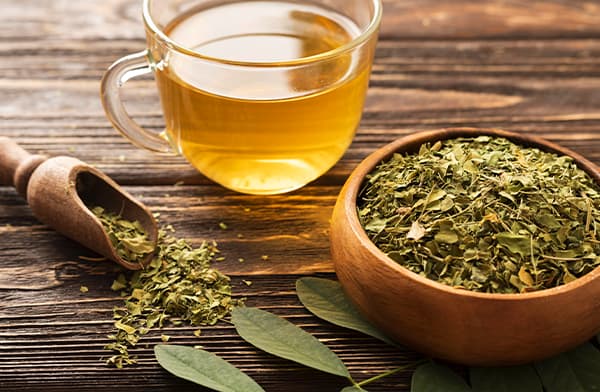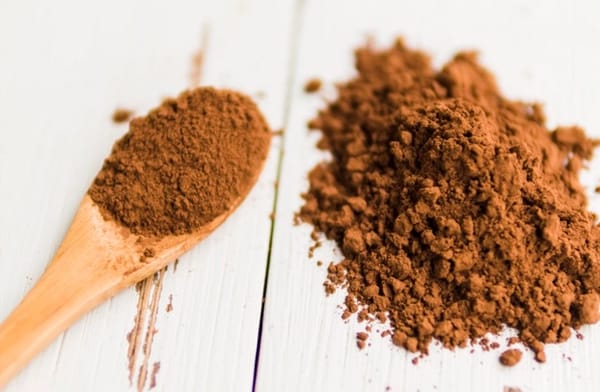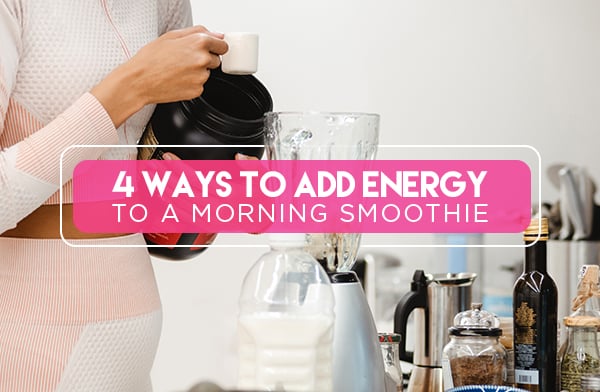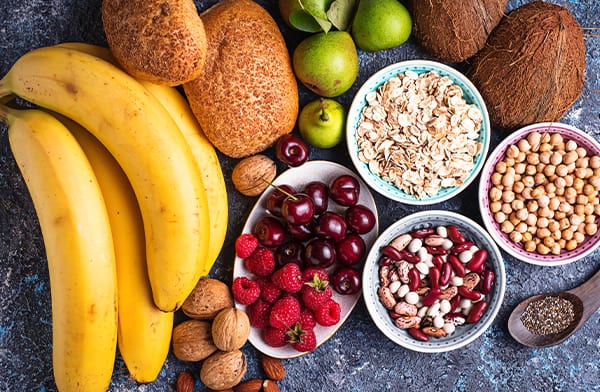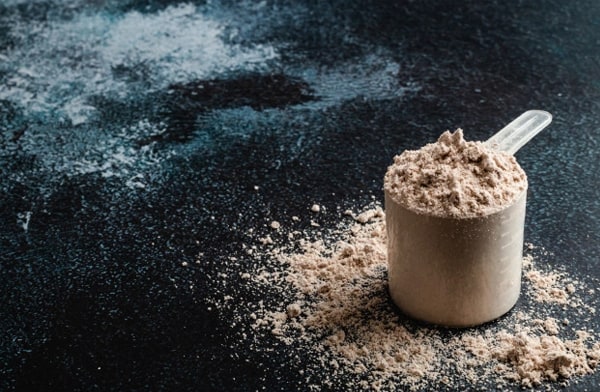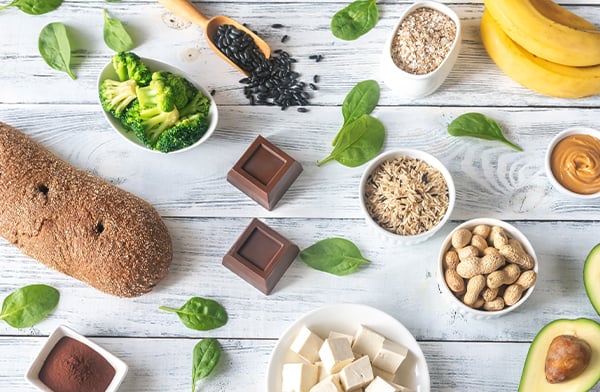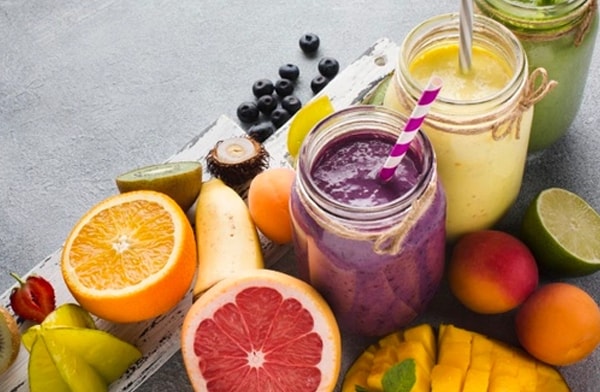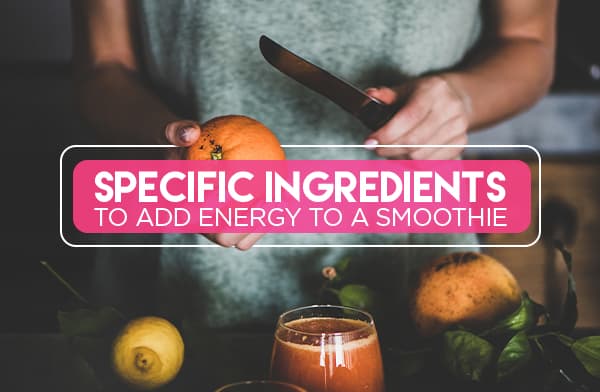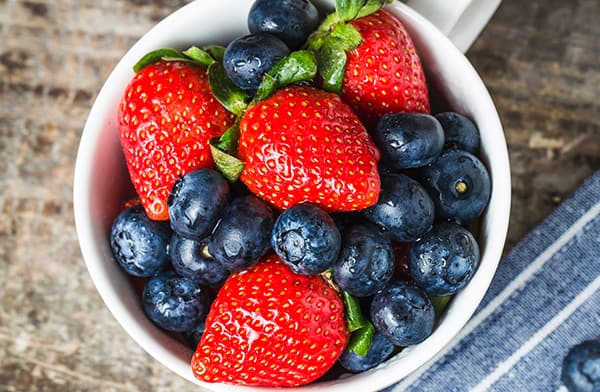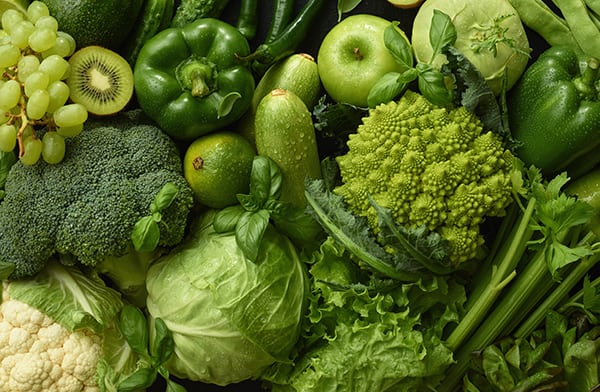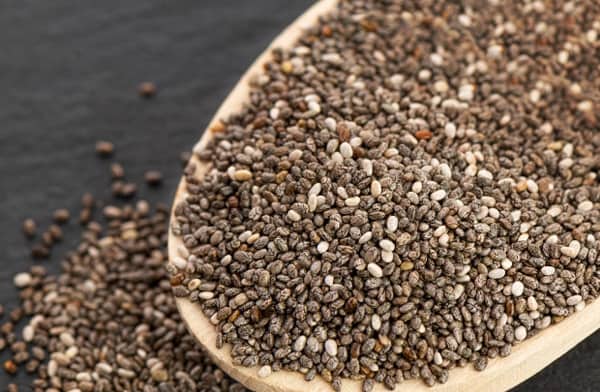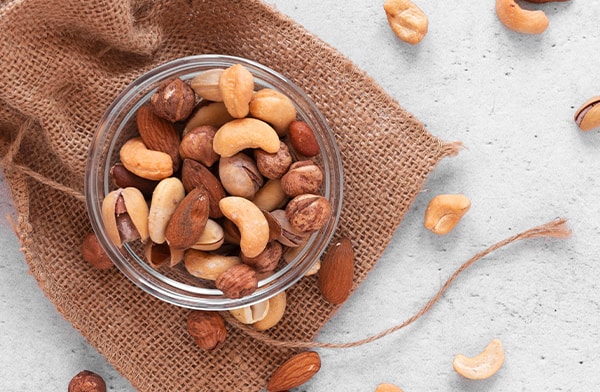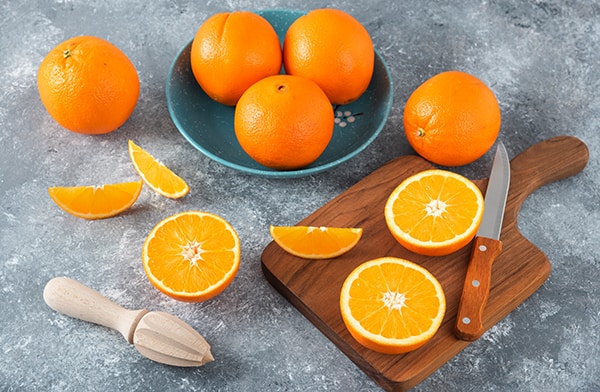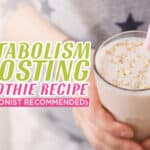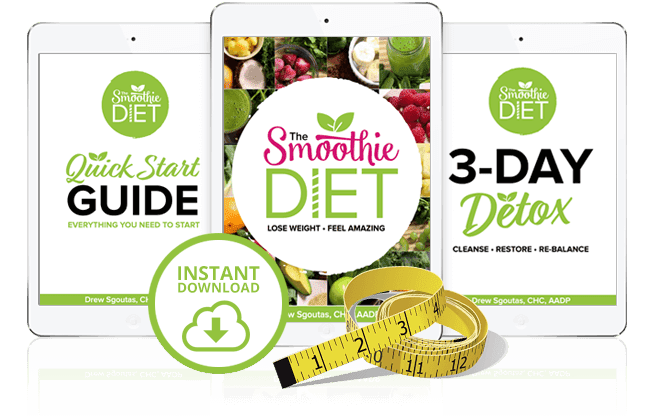15 Ways to Add Caffeine and Energy to Your Morning Smoothie
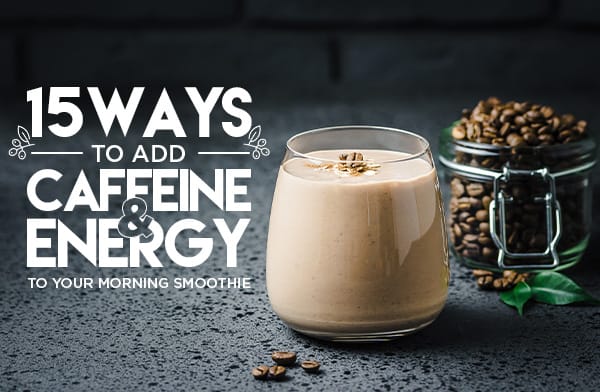
Millions of us whip up smoothies first thing in the morning. Some of us go for weight loss smoothies, some prefer detox blends, and some want a meal replacement that leaves them feeling full until lunchtime.
What we all want, though, is that morning pick-me-up. Sometimes, especially after a hard workout from the previous day, it’s hard to wake up in the morning. Why not make things easier by adding energy-boosting ingredients to your morning smoothie?
There are two main ways to add energy boosts to a smoothie: caffeine and non-caffeine energy boosters.
I’ll go over both of them throughout this post. Make sure you stick around to the end for some suggestions and recommendations!
4 Ways to Add Caffeine to a Morning Smoothie
First, let’s talk about the various ways you can add caffeine to a smoothie. We all know caffeine is a stimulant used by billions of people worldwide, but few people think to add it to their morning smoothie. That’s what a cup of coffee is for, after all.
Well, you’re not wrong!
Coffee is one of the easiest ways to get caffeine in the morning. The trick is, it’s not mutually exclusive with smoothies – you can add coffee to your smoothies! And, if you’re not the biggest fan of coffee, there are a couple of other ways you can get caffeine in your smoothies, too.
1. Coffee
First and foremost is adding coffee itself. Rich, dark, bitter; the aroma and taste of coffee are familiar the world over.
A single cup of coffee has around 95 milligrams of caffeine in it, which is plenty to get you up and going in the morning, at least until you’ve built up a tolerance.
To add coffee to a smoothie, I recommend a mix of sweeter ingredients than your usual berry-and-citrus recipe. Consider nut butter, cacao nibs, banana, almond milk, and other similar ingredients. As for the coffee itself, you have several options:
- You can brew up a cup and use it as your base liquid.
- You can make some cold brew concentrate overnight.
- You can freeze some coffee into ice cubes and use those for substance.
- You can even add coffee grounds directly if you don’t mind the texture.
You have a ton of choices.
2. Tea
What if you don’t like the taste of coffee? Believe it or not, there are plenty of people who don’t like the taste or bitterness.
For those of you who don’t like coffee, tea is typically the next go-to for caffeine. Note, though, that it has to be actual tea, not herbal tea. Black tea is the strongest, but green tea and matcha are also good options. Brew them strong and add them to any green or fruit-based smoothie recipe, and you’re good to go.
3. Unsweetened Cocoa Powder
Another option is to add some unsweetened cocoa powder to your smoothie. Not only is cocoa powder great for nutrition, but it can also improve your heart health, blood pressure, and cholesterol. It also tastes great in smoothies, especially when blended with some bananas.
What about energy, though? Surprisingly, cocoa powder has some stimulatory properties that can have an impact on your energy levels. Studies have found that cocoa can improve your energy regulation and boost your metabolism, reducing fatigue and making you feel fuller for longer.
When buying cocoa powder, make sure it doesn’t have any sugar. Cocoa provides sustained energy without any crash, but if it’s loaded with sugar, it could leave you feeling tired after your crash.
Cocoa powder is also pretty potent; you only need to add a couple of teaspoons to your smoothies.
4 Ways to Add Energy to a Smoothie Without Caffeine
What if you don’t want to add caffeine at all, but you still want to boost the energy you get from a smoothie? Some people have a caffeine sensitivity, and others have built up such a tolerance that it would take an unsafe amount of caffeine to give them enough energy to be worthwhile. Not to mention the potential for jitters when the stuff wears off!
Luckily, you can boost energy levels with smoothies; you need to know how your body creates and releases energy.
1. Fiber
One of the most crucial ingredients in any smoothie is a source of fiber. Fiber is a carbohydrate (which isn’t necessarily bad for you!), and it’s difficult for your body to digest. Having fiber in your system has a lot of benefits. It slows digestion, so you get more out of what you eat. It keeps you feeling full for longer, suppressing your appetite.
It’s slow-release energy. A good source of fiber is near-essential for a morning energy boost.
2. Protein
Protein is a secondary energy source. Your body usually prefers to break down carbs and sugars first, then fats, and if all else fails, it will use protein for energy. That’s not why you’re adding it, though. No, protein is utilized to repair damage throughout your body. A lack of protein allows stress and fatigue to build up.
So, while protein doesn’t boost energy, it reduces fatigue. If you’re not feeling tired and weary, you’re going to feel more energetic.
3. Magnesium
Magnesium is a mineral used in trace amounts throughout your body in over 300 different processes.
One of those processes is your body breaking down sugar and using it for energy. Even a minor magnesium deficiency can have a significant effect on your energy levels. You can find the mineral in many good smoothie ingredients, including seeds, spinach, nuts, peanut butter, yogurt, and bananas.
4. Natural Sugars
Sugar gets a bad rap. Your body needs sugar to fuel itself and survive. It’s also pretty much impossible to avoid sugar altogether. The trick is realizing that refined sugars and natural sugars are different.
Healthy sugars are the sugars found in fruits and vegetables. Refined sugars are high fructose corn syrup and the white granulated sugar you buy in the baking aisle. Healthy sugars are balanced with fiber, but refined sugars have the fiber removed. See the problem?
Give your body some natural sugar to burn for fast, accessible energy, and you’ll perk right up. With fiber and other long-term energy sources in your smoothie, you’ll pick up energy from those just as the energy from sugar is tapering off. It’s all about balance.
Specific Ingredients to Add Energy to a Smoothie
Now that I’ve talked about the broad ways you can add caffeine and energy to your smoothies; let’s look at some more specific ingredients. Below, I’ve listed a handful of categories and given you some examples of ingredients within them. If you don’t like a particular ingredient, feel free to swap it for another in the same category.
1. Berries
Berries are one of the staple ingredients for almost any smoothie. Blueberries, in particular, are an excellent choice. Others, like strawberries, blackberries, raspberries, and goji berries, are all good too.
They have natural fruit sugars for short-term energy, plenty of fiber for long-term energy, and are packed full of vitamins and minerals to support your body throughout the day. And, of course, they taste great.
2. Greens
Greens are, to me, the core of any healthy smoothie. Even fruit-based smoothies can benefit from a handful of vegetables; I recommend spinach, romaine lettuce, kale, chard, bok choy, and arugula.
They all have different flavor profiles and nutritional profiles, so try to rotate through them every few days. Greens are high in fiber and minerals, and most of them are relatively light in flavor, so they don’t get in the way of whatever else you’re adding.
3. Seeds
Seeds are always a great addition to your smoothies. I like to classify them as either “large” seeds or “small” seeds. Large seeds are seeds like pumpkin and sunflower seeds.
Small seeds are things like chia, hemp, and flax.
Seeds are an excellent source of fiber, protein, and minerals. In particular, seeds are one of the best sources of dietary magnesium, which, as mentioned above, is one of the most important minerals for your body to produce energy.
Some people don’t care for the texture of the smaller seeds, but if you run them through a spice grinder or a mortar and pestle first, you can grind them into a fine powder that mixes much more easily into your smoothies and won’t leave them feeling gritty.
That’s a matter of preference, though; it doesn’t impact the nutritional profile in any way.
4. Coffee/Tea
I mentioned these up in the first section as a way to get caffeine into your smoothies. Caffeine is an energy booster, for sure.
I tend to recommend tea instead of coffee, though, for a few reasons. For one thing, it’s full of other phytonutrients, vitamins, and minerals that are all beneficial to your energy levels. For another, it’s a much easier flavor to work into your smoothies.
Coffee is potent, so it’s hard to add to a fruit smoothie. You have to build around it rather than add it the way you can add tea.
In terms of tea, different kinds of tea have different amounts of caffeine. White tea is the lightest, followed by green and matcha, then oolong, and finally black tea with the largest caffeine concentration.
That said, the amount of caffeine does vary by how strong you brew your tea, and it’s all within a similar range. A weak white tea has about 30 milligrams of caffeine, while a strong cup has closer to 55.
A weak black tea starts around 60 mg of caffeine, and a potent black tea can have as much as 90 mg. So, pick your tea depending on how much caffeine you want in your smoothie.
5. Yogurt/Kefir
Yogurt is one of the most common smoothie bases out there. As a dairy, it has a lot of natural sugar in it, in the form of lactose.
It’s probiotic, so it helps keep your gut healthy. It’s also packed full of magnesium, so you’ll never run low on the essential mineral.
Kefir is a fermented dairy product, sort of similar to yogurt but stronger. It’s tangy, like a good Greek yogurt but thinner, so it helps you make thinner smoothies. Just be careful; some store-bought brands of kefir are loaded with refined sugars and flavorings. You want to avoid those as much as possible.
6. Nuts
Nuts are a great way to add a set of natural, healthy fats and proteins to your smoothies. They can also add a nice, creamy texture if you use nut butter rather than raw nuts. Peanuts are a good go-to, but you can also use almonds, cashews, and walnuts.
Like Brazil nuts and macadamia nuts, others can be good too but are occasionally harder to find. (Yes, peanuts aren’t technically a nut. Still, they fit the flavor profile and have a similar nutritional construction, serving the same purpose.)
Nuts make a significant part of your flavor base, and the healthy fats and minerals they bring to the table are excellent. Just make sure you aren’t buying sugary nut spreads instead of pure nut butter.
7. Oranges
Many of the best smoothies have citrus somewhere in their flavor profile. Oranges are among the most common. Oranges are loaded with vitamins, particularly vitamin C, as well as minerals and natural sugars. They’re excellent for boosting energy, and the bright orange flavor is fantastic as a way to wake up your mind in the morning.
As with several other ingredients on this list, make sure you’re buying fresh oranges and adding whole wedges (with peel and pith removed), rather than just store-bought orange juice. Orange juice is usually loaded with sugar and has all the fiber removed, so it’s candy water. Fresh is best.
So, there you have it; fifteen ways and assorted ingredients you can use to infuse your morning smoothie with energy. Whether or not you want caffeine is a personal choice; it works either way.
For more tips, ingredient replacement guides, and other options, check out my Smoothie Diet program!

